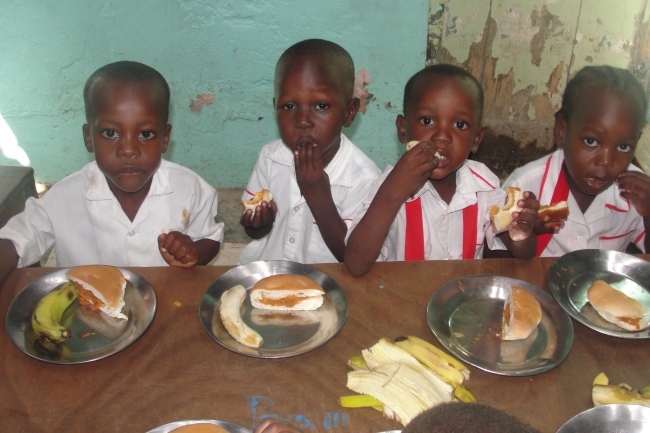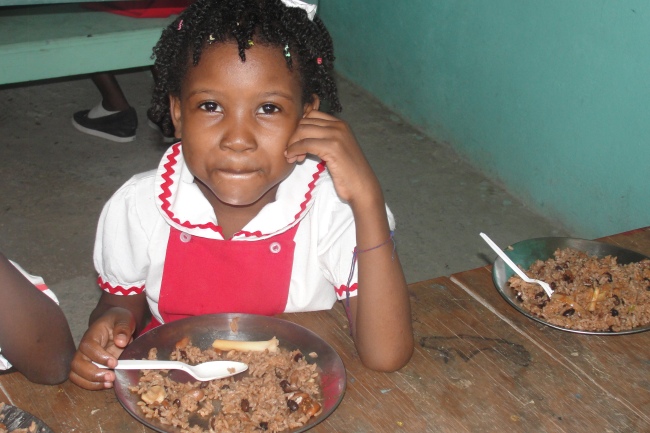From Emily
Summer nights in Gonaives are some of the best. The sun has gone down and taken the heat away with it. Neighbors gather on their balconies and doorsteps to visit long into the night. When I spent my summer in Haiti in 2013, I often passed my evenings doing just this: sitting outside in the cool night air talking with Elda and whatever neighbor women happened to be over at the time. They would braid each other’s hair and chatter on and I would mostly listen.
One summer’s night, Elda and I got to talking about her dream of starting a sewing workshop to teach young women how to sew. We had been talking about how most of the mothers in our feeding program don’t seem to have a good way to make money for themselves and support their children whose fathers have long since made themselves scarce. And she told me about how she had once poured herself into running a small sewing workshop on the outskirts of town. It was well-attended and got off to a good start, but as with so many well-begun projects in Haiti, the funding eventually dried up and she had no choice but to let it die.
“If only I could start something like that for the women here,” she said. “It would make such a difference for them.”
Several weeks later, I once again found myself enjoying relaxed conversation in the cool darkness, this time with a recent graduate from San Diego’s fashion institute who had come to spend a week helping us build a fence around our garden. When I asked her about her hopes for the future, Angeline told me about her dream of somehow using her degree for something more than simply pandering to the world’s vanities.
It all clicked. Elda dreamed of starting a sewing workshop. Angeline dreamed of designing clothes for a cause. The mothers of the kids in our program needed a source of income. There was a growing market for ethically-sourced clothing in the US. And so the idea for a workshop in our little community was birthed.
Now, a year and a half later, I am proud to present Elda, our brand-new clothing brand. Born of a dream deferred for decades, made by hands eager to learn, each product we have for sale is a victory. It’s nearly a month’s wages for the woman who made it. It’s 30 meals for children in our feeding program. It’s hours spent designing patterns and trying to teach ourselves accounting. It’s long, hot mornings spent wrestling with temperamental machines and flaky electricity.
Not a single part of this was easy but we’re proud of where we are. We’re proud of Elda, our company’s namesake, who held onto her dream and has been faithful to see it through. We’re proud of the women who worked tirelessly to learn their craft and perfect it. And we’re proud of the skirts we have to show for it all.
We only have as many skirts as the women have been able to make so far—less than 100 in all—so order yours now and join us in coming alongside Elda and the women she mentors as we work towards our mission of empowering Haitians with skills to grow their communities spiritually, physically and intellectually.







